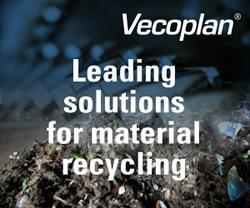Defect Detection in Photovoltaic Modules
Wind Industry enjoyed its second-best year but scaling-up for Net Zero requires policy breakthrough
Generating Recurring Revenue with Active Monitoring of Solar Systems
Solar/Wireless Site Cameras Monitor Substations and Renewable Power Plants
New biodiesel strains offer measurable gains
Scientists achieve record efficiency for ultra-thin solar panels
The Energy Transition - a Near Certain Endpoint With an Uncertain Trajectory
Electrifying Commercial Vehicles
Powering Towards a Sustainable Future
Offshore Wind Farms Could Interfere With Radars
Hanwha pledges commitment to build a fully American solar supply chain
SMA America and STC Sunbelt SpA Shine a Spotlight on Sustainability with the Nueva Cordova Building
The Three Major Methods of Designing a Rooftop Solar System
How to clean solar panels without water
Scientists Show Large Impact of Controlling Humidity on Greenhouse Gas Emissions
Records 511 to 525 of 1817
First | Previous | Next | Last
Other Renewables - Featured Product

